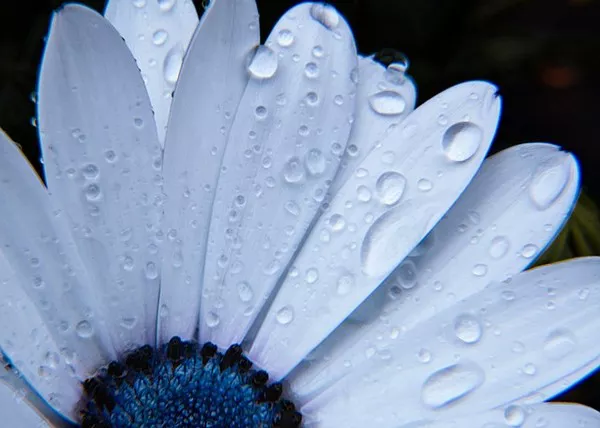Chrysanthemums, often revered for their vibrant hues and intricate petal patterns, have been cherished for centuries as symbols of longevity and happiness. Whether you’ve received a bouquet or cultivated these stunning blooms in your garden, the desire to preserve their beauty is only natural. This comprehensive guide will walk you through various methods to ensure your chrysanthemum flowers retain their vibrancy and charm long after they’ve been cut.
Understanding Chrysanthemums: A Brief Overview
Before delving into preservation techniques, it’s crucial to understand the characteristics of chrysanthemum flowers. Chrysanthemums, commonly known as mums, belong to the Asteraceae family and encompass a diverse range of species and hybrids. They come in various colors, including shades of white, yellow, red, and purple, making them a favorite choice for floral arrangements and gardens.
Chrysanthemums are classified into various types based on their flower forms, such as pompons, spiders, and cushions. Each type requires different preservation methods due to variations in petal structures and moisture retention capabilities.
Harvesting Chrysanthemum Flowers: Timing is Key
Preservation efforts start at the very beginning – the harvesting stage. Timing plays a crucial role in ensuring the longevity of chrysanthemum blooms. Choose flowers that have just started to open, with petals showing vibrant colors but not fully expanded. Harvesting in the morning or late afternoon, when the flowers are well-hydrated, is ideal.
Use clean, sharp pruning shears to make a clean cut at a 45-degree angle, allowing for better water absorption. Remove any leaves that might be submerged in water when arranging the bouquet, as submerged foliage can promote bacterial growth.
Water Preservation: The Classic Approach
The most common method to preserve chrysanthemums is by placing them in water. This classic approach involves a series of steps to maximize water absorption and minimize bacterial growth:
Clean Vase: Choose a clean vase and fill it with lukewarm water. Rinse the vase thoroughly to remove any bacteria that could harm the flowers.
Trimming Stems: Recut the stems at a 45-degree angle just before placing them in the vase. This ensures a fresh surface for water absorption.
Remove Submerged Foliage: Clear the stems of any foliage that might be submerged in water to prevent bacterial growth.
Water Level Maintenance: Regularly check and maintain the water level in the vase. Change the water every two days to keep it clean and fresh.
Additives: Consider adding floral preservatives to the water. These commercial products provide nutrients and inhibit bacterial growth, extending the life of your chrysanthemum flowers.
Drying Chrysanthemums: A Timeless Technique
For those looking for a more enduring solution, drying chrysanthemums can be an excellent option. Dried chrysanthemums can be used in various crafts and décor projects, preserving the beauty of the flowers for months or even years. Here’s how to do it:
Choose the Right Blooms: Select chrysanthemum flowers that are at their peak, with vibrant colors and firm petals. Avoid blooms that are fully open or starting to wilt.
Air Drying: The simplest method is air drying. Bundle the flowers together with twine or rubber bands and hang them upside down in a dry, dark place with good air circulation. This process may take a few weeks.
Silica Gel: Use silica gel to speed up the drying process. Place the flowers in a container filled with silica gel, making sure they are completely covered. Seal the container and leave it for a few days until the flowers are dried.
Pressing: Another traditional method is pressing the chrysanthemum flowers. Arrange them between sheets of absorbent paper or parchment paper, placing a heavy book or object on top. Leave them pressed for several weeks until fully dried.
Seal and Protect: Once dried, spray the chrysanthemums with a clear acrylic sealer to protect them from dust and moisture. Handle them gently to avoid breakage.
Freeze-Drying Chrysanthemums: A Modern Approach
Freeze-drying is a contemporary method that preserves the color and structure of chrysanthemum flowers exceptionally well. While it may require specialized equipment, the results are worth the investment. Here’s a step-by-step guide:
Preparation: Select chrysanthemum blooms at their prime and remove any excess foliage. Trim the stems at a 45-degree angle.
Flash Freezing: Place the flowers on a tray and flash freeze them in a home freezer for a few hours. This step helps retain the shape and color during the drying process.
Vacuum Chamber: Transfer the flash-frozen chrysanthemums to a vacuum chamber. The vacuum process removes moisture from the flowers while maintaining their structure.
Sealing: Once dried, seal the chrysanthemums in an airtight container to prevent moisture absorption. Store them in a cool, dark place to maintain their color and integrity.
Chrysanthemum Preservation for Arrangements and Displays
Preserving chrysanthemums for floral arrangements or displays requires additional considerations. Whether you prefer the classic water preservation or opt for dried or freeze-dried blooms, here are some tips to enhance the visual appeal of your arrangements:
Color Harmony: Choose chrysanthemum varieties that complement each other in terms of color and form. This creates a visually appealing arrangement.
Mixed Media: Combine preserved chrysanthemums with other dried flowers, foliage, or even artificial elements to add texture and interest to your arrangement.
Vase Selection: When arranging preserved chrysanthemums, consider the vessel’s size, shape, and color. A well-chosen vase can enhance the overall aesthetic.
Maintenance: Dust your preserved arrangements regularly with a soft brush or compressed air to keep them looking fresh. Avoid exposure to direct sunlight, as it may fade the colors over time.
Conclusion
Whether you opt for the classic water preservation, the traditional method of air-drying, or the modern approach of freeze-drying, preserving chrysanthemum flowers is a timeless art that allows you to enjoy their beauty long after they’ve been harvested. Understanding the characteristics of these blooms, choosing the right preservation method, and incorporating them into thoughtful arrangements will ensure your chrysanthemums continue to captivate with their elegance and charm. Embrace the art of preservation and let the beauty of chrysanthemums grace your surroundings for months to come.


